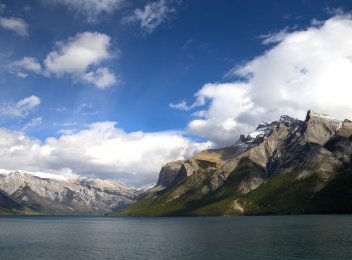Latest News
-

Upcoming Como Events -...
July 15, 2013Rich heritage and culture of Como lures tourists ...
More Info -

Lake Como Musical Month...
July 22, 2013Enough has been written about the soothing beauty...
More Info -

Como Concert Nights –...
July 29, 2013You can have a good time anywhere in Italy but fo...
More Info -

Latest News! Robert De...
September 04, 2013Do you own a prime Lake Como property that you wi...
More Info -

Lake Como Festival...
September 30, 2013Lake Como is beautiful every month of the year bu...
More Info -

8th Rome Film Festival...
October 31, 2013Italy is visited throughout the year by travelers...
More Info
Leisure & Sports
Sociale Theatre of Como
The Sociale Theatre of Como was born in the year of Giuseppe Verdi and Richard Wagner’s birth (1813). Already in 1807 negotiations were underway to purchase the area of Castello della Torre Rotonda known as the ‘luogo delle rovine’ (site of the ruins), to build the New Grand Theatre of Como. The perimeter walls of the castle can still be seen today and delimit the theatre and the theatre’s arena area. In 1811 construction work began on the theatre and the project was assigned to the architect Giuseppe Cusi. On the evening of 28 August 1813 the curtain of the Teatro Sociale of Como went up for the first time.
A multitude of interventions and restoration work were later carried out: with extraordinary maintenance work in 1838, an expansion in 1855, the introduction of gas lines in 1864 and electricity in 1899. The theatre was expanded in 1855 with the addition of 38 boxes: 12 thanks to the enlargement of the parterre area, the others were obtained from the pre-existing fourth section. To build the fifth section, the gallery, they had to raise the building, consequently sacrificing the original vault dating back to 1813, attributed to Alessandro Fiori, which depicted the coronation of Vittorio Alfieri, the Asti poet, surrounded by Bacchantes, chandeliers and festoons.
The current painting of the ceiling vault, which depicts the muses coming down from Olympus to crown the artists, was created by Eleuterio Pagliano based on a design by Gaetano Spelluzzi, created during the restoration of 1855. In 1899, to celebrate the one-hundred year anniversary of Alessandro Volta’s invention of the battery, the theatre was furnished with electricity. In 1909 the boxes in the fourth row were eliminated to create a single gallery, to satisfy the increasing demand of the local public. Today, the room is cello-shaped and the walls have a wood structure with 5 sections: 3 sections for the 72 private boxes, in addition to the royal box, and 2 sections for the galleries (IV and V section). The Sociale Theatre of Como has a historical curtain by Alessandro Sanquirico, a famous set designer and painter from the early 1800’s, which represents the death of Pliny the Elder during the eruption of the Vesuvius volcano in 79 A.D. In 1938, the arena of the Sociale Theatre was transformed into an outdoor public theatre, with a structure designed by the engineer Ponci, with a seating capacity of up to 4000. Today, the stage and the structures are in a desolate state of abandon and the parterre has been reduced to a parking lot.
With a planning agreement signed in 2005 by the Società dei Palchettisti (owners of the theatre boxes), AsLiCo (the Italian Opera and Concert Association) the Lombardy Region, the Municipality and Province of Como, once again the theatre has undergone a meticulous restoration. The works included the stuccos, the vault, the stage and the recent replacement of the chairs in the parterre.
The Sociale Theatre hosted La Scala after the 1943 bombing made the prestigious Milan theatre unfit for use. Thanks to this cooperation, the finest artists of the period performed in Como. All of the ‘greats’ sang at the Sociale Theatre: Giuditta Pasta and Malibran, followed by Tamagno, Gigli, Pertile, Schipa, Valletti, Merli, Galeffi, Filippeschi, Basiola, Del Monaco, Tagliabue, Pasero, Bechi, Poggi, Stabile, Bastianini, Dal Monte, Dalla Rizza, Adami Corradetti, Pacetti, Elmo, Simionato, Favero, Pagliughi, Cigna, Barbieri, Carosio, Caniglia, Zeani and Devia. Many legendary orchestra directors have appeared here as well, from Toscanini to Muti.
As of January 1, 2002 the management of the plays and all of the theatre’s activities was assigned to AsLiCo (the Italian Opera and Concert Association) of Milan. The Sociale Theatre of Como, open more than 300 days a year, and the Società dei Palchettisti theatre subscribers association, who for years have supported the theatre’s activities, still maintains ownership of the facility.
The Sociale Theatre of Como, inaugurated on 28 August of 1813, is a not-to-be-missed destination for people who decide to spend their holidays on Lake Como.
La Scala Theatre in Milan Known as the temple of opera, La Scala Theatre was built in 1776 and since then has gone through various phases of renovation. The theatre has witnessed performances from Mozart & Chiara, and is visited by vacationers interested in exploring the cultural heritage of Lake Como. Old: Short des: La Scala Theatre of Milan is a must-see destination for theatre lovers who decide to spend their holidays on Lake Como Full:
The La Scala Theatre of Milan, one of the most famous theatres in the world, is known as the “temple of opera ".
Located in Piazza della Scala, one of the most popular and elegant squares in the city of Milan.
The name of the square, in turn, refers to that of the Church of Santa Maria della Scala, built in 1381 and named in honour of the patron, Queen of the Scala and wife of Bernabò Visconti – this church was demolished to make way for the theatre.
The current theatre season, one of the most important events in Milan’s cultural life, is made up by opera, ballet and classical music concerts.
The pride and joy of the city of Milan, the La Scala Theatre was founded in 1776 at the behest of the Empress Maria Theresa of Austria and designed by the architect Giuseppe Piermarini.
On 3 August 1776 the prestigious theatre was inaugurated with Antonio Salieri’s work “Europa Riconosciuta”.
With the 1812 performance of Rossini’s “La Pietra del Paragone”, La Scala became the home of Italian opera, while ballet acquired a role of primary importance following collaborations with the choreographers Salvatore Vigano and Carlo Blasis and major international stars including Carla Fracci, Liliana Cosi, Luciana Svignano, Oriella Dorella, Alessandra Ferri, Margot Fonteyn, Serge Lifar, Maya Plissetskaya and Rudolf Nureyev.
From an architectural standpoint, La Scala Theatre is reminiscent of the Theatre of the Royal Palace of Caserta, by Vanvitelli, but immediately became the model for “Italian-style theatres” which inspired many other theatres including La Fenice in Venice and others.
Originally, its interior was quite different from the way it appears today: it was renovated numerous times.
Its current appearance is reminiscent of the neoclassical, with bands that form the railing of the galleries and ivory-coloured boxes and gold decorations. The columns that separate one box from the other are slightly retracted in order to improve the audience’s view. Initially the boxes were decorated in the manner preferred by the individual owners, who adorned them with colourful rugs, furniture, mirrors and chairs of their choice. Now the walls have been uniformly covered with red damask, with the exception of one box (which survived the bombing of 1943) which maintains its original furnishings and decorations. Up to a few years ago the flooring of the stalls, boxes, stairs and corridors were completely covered in red carpet. After the renovation the floor of the parterre was paved with exposed wood, arranged in special layers to improve the acoustics. Terracotta tiles were placed in the boxes. While the ambience may have been more luxurious before the renovation, it must be said that now, in addition to the aesthetics, even the acoustics have been improved.
Renovation work began immediately. In 1808 the architect Luigi Canonica intervened by increasing the depth of the stage, subsequently proceeding in 1814 to demolish certain buildings (including the Scala convent) situated on what is known today as via Verdi, to allow for the construction of new rooms for sets and new building services.
Some of the most important works performed here include the Magic Flute by Wolfgang Amadeus Mozart in 1816, Chiara and Serafina by Gaetano Donizetti between 1822 and1825 and The Pirate by Vincenzo Bellini, in 1839 Oberto, Count of San Bonifacio by Giuseppe Verdi and in 1855 Le Villi, Manon Lescaut, Madame Butterfly, La fanciulla del West by Giacomo Puccini.
The theatre’s artistic direction was alternately entrusted to great masters such as Arturo Toscanini, who after the bombing of La Scala in 1943 directed the historic re-opening concert in 1946. Guido Cantinelli, who had the great pleasure of working with major artists such as Maria Callas, Renata Tebaldi, Giuseppe Di Stefano, Mario Del Monaco, Luchino Visconti and Giorgio Strehler, the maestro Claudio Abbado, Maurizio Pollini and Riccardo Muti, who in 1986 became the director of La Scala Philharmonic Orchestra.
The year 2001 marked the last season for La Scala Theatre before it was closed for a major restoration. While work was being performed, performances were held in the new Arcimboldi Theatre.
On 7 December 2004 the theatre was reopened to the city with a performance of a work that had inaugurated the debut 266 years earlier, Salieri’s work “Europa Riconosciuta” directed by the maestro Riccardo Muti.
For theatre lovers who decide to spend their holidays on Lake Como, La Scala of Milan is must-see destination that is easy to reach by using public transportation and thanks to the proximity of the two cities (about 40 minutes away).










